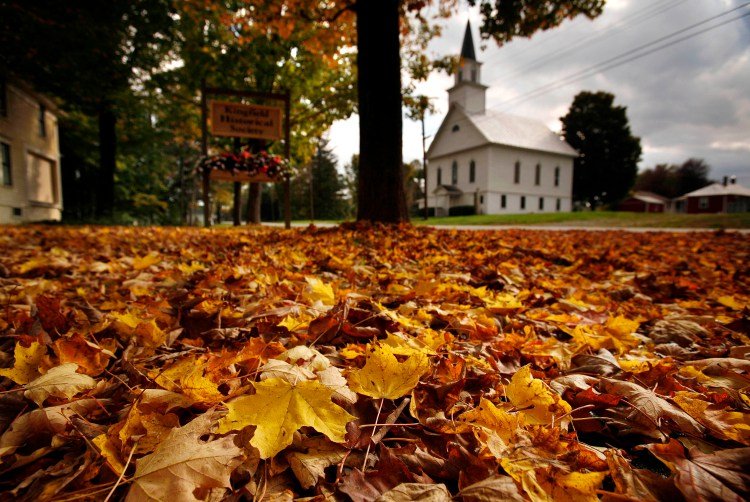
Why go away the leaves? They supply shelter and safety for a lot of animals by means of the winter and return vitamins again into the soil. Robert F. Bukaty/Related Press
There are some matters too vital to not carry up yearly, and as I drive round seeing dozens of trash baggage being full of leaves, and the hum of leaf blowers fills the autumn panorama, I do know it’s time for the annual reminder to “go away the leaves.”
This has been an exquisite fall for foliage across the state and as we strategy the tip of October lots of these leaves are carpeting the bottom. Oaks will dangle a bit longer, however our culturally ingrained lawn-loving intuition is kicking in to clear our yards and exhibit the non-native grass we’ve saved completely mowed all summer season. As a substitute, I’m right here to encourage you to kick your ft up, or go work on one other undertaking, and go away these leaves on the bottom.
After all in case you are studying this column, that that is coming purely from an environmentally aware perspective. The leaves present shelter and safety for a lot of animals by means of the winter and return vitamins again into the soil. You might favor the aesthetic of a organic wasteland, or a minimum of the monoculture of non-native grass that has develop into commonplace in most American yards. My yard has grass, too, a minimum of proper in entrance of the home, whereas I’ve let a 3rd of my yard go “wild.” I planted a couple of native crops so as to add some native berries (birds love the fruit from the arrowwood viburnum) and a splash of shade (purple osier dogwood stems) to my yard.
I usually advocate studying Krystal D’Costa’s 2017 Scientific American piece “The American Obsession with Lawns” for a historical past and rationalization of our unusual fascination with lawns and the way they’ve develop into a cultural “image.” The unlucky reality is that if you need a “excellent” garden, you’re virtually definitely going to have a damaging influence on some wildlife.
One other fall yard-care idea I’ve written about previously, however warrants mentioning once more right here, is that now is a superb time to work on eradicating invasive species. There are a couple of actually dangerous offenders that usually acquired to our yards by chance however thrive and outcompete native species with out controls, like their pure predators. There are a few species I discover capturing up in my yard yearly, regardless of my finest efforts to manage them. This serves as a very good reminder that it does take common upkeep; seeds are actually good at spreading.
Two invasives to search for now are Japanese barberry and multiflora rose. Japanese barberry (berberis thunbergii) is a brief shrub with shiny purple fruit and a pointy backbone. Fall is a simple time to identify them as their densely clustered oval-shaped leaves flip a vivid purple; all summer season they’ve blended in with the whole lot else round them. It’s also straightforward to identify the rose hips and bicolored stems of multiflora rose (rosa multiflora) as soon as their leaves drop.
For a whole listing of Maine invasive species to be looking out for, go to the Maine Pure Areas Program web site. This listing is simple to go looking and consists of reality sheets on all of the species that even inform you finest management strategies.
Needless to say this doesn’t need to be an all-or-nothing process. Is there 1 / 4 of your yard that you could go away untouched and provides bees, salamanders and caterpillars a greater likelihood to outlive? We’re in a biodiversity disaster proper now, and one thing so simple as “doing much less yardwork” can hopefully add as much as having a big effect.
Have you ever acquired a nature or wildlife query of your personal? It doesn’t need to be about birds! E mail inquiries to ask@maineaudubon.org and go to maineaudubon.org to be taught extra about birding, native crops, and packages and occasions specializing in Maine wildlife and habitat. Doug and different naturalists lead free chook walks on Thursday mornings, 7 to 9 am, at Maine Audubon’s Gilsland Farm Audubon Sanctuary in Falmouth.





